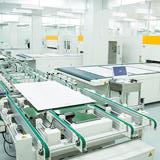

The semi-automatic screen printing machine is also a relatively common equipment in the screen printing industry. For operators who are just learning screen printing, it is still not clear how to operate. Gyor is here to share the operation steps of the semi-automatic screen printing machine.
First, semi-automatic screen printing machine preparation before operation
1. Prepare the production materials (main material) and washing water (accessories) before starting the machine.
2. Check the whole machine once before starting up every day!
3. After everything is normal, close the power supply.
4. Make sure the machine is not faulty, then turn on the safety insurance and press the power button.
Second, the semi-automatic screen printing machine is adjusted to produce
1, check the plate
Check the seal of the printing plate, whether the printing plate is damaged by sand holes, whether the printing plate and the bottom plate are installed loosely, whether the mesh distance is appropriate, whether the printing rule is correctly positioned, and whether there are any sets of colors.
2, the choice of scraper
The length of the scraper should be slightly longer than the printed image. Different substrates should use different shapes of scrapers. The squeegee should have a certain flexibility to improve the contact between the screen and the substrate and to make the ink uniform. The scraper mouth is required to be flat. If the sandpaper is flattened by unevenness, the scraper material can be made of 5mm acid-resistant rubber.
3, printing material preparation
The preparation of the printing materials should be determined according to the material and printing requirements of the printing materials. The key to the printing is to adjust the color, adjust the dryness and adjust the viscosity, and strive to meet the requirements of the printing. The printing should be adjusted first, stored for one day, and its performance is stable, except for the gold adjustment. You should also check for any foreign matter in the print to prevent the print plate from being scratched.
4, cast the printing material
The printing material is generally placed in the front position of the frame and the width of the blade. The printed material in the frame cannot be placed too much and added at any time to facilitate the control of the amount of ink during the squeegee operation.
5, scratching
1 Hand-held substrate placed on the plate with the rules, the screen frame is placed, and a certain mesh distance is left between the plate and the plate.
2The hand-held squeegee is pressed against the screen. When the squeegee is scraped, it should be kept at an angle of 50-60°. The squeegee will be squeegeeed at a certain speed to make the printing material under the action of the blade pressure, from the mesh hole of the hollowed-out graphic part. The medium is leaked onto the substrate, and the screen rebounds and the substrate is separated after the scraper is scraped. Depending on the size of the printing area and the length of the squeegee, one-hand or two-hand squeegee operation can be used, but to control the amount of printing, the printing plate layout should be scraped clean, and no printing material should remain in the graphic of the printing plate.
3 Lift the frame and remove the substrate from the platen.
6, scrub the screen
During the printing process, when the blotting is blurred and the mesh is clogged, the plate should be scrubbed. Use the degreased cotton or soft cloth to wipe the front and back sides of the screen. When scrubbing, scrub the image first, then scrub the other places. The front and back sides of the plate should be cleaned, the wire should be unblocked, and the solvent on the plate should be blotted. The plate should also be wiped clean after printing.
7, color printing
It is necessary to distinguish the color of the ink when it is used for color-printing. In general, it should be printed with a light color and then printed with a dark color. The first one should be printed after the second, and the printing plate should be arranged. The color version must be overprinted accurately, especially the first color plate rules must be printed very accurately. When there is a mixed color squeegee, the upper version of the printing plate should be changed according to the mixed color to facilitate the squeegee printing.
8, drying after printing
Drying is carried out after each printing, but the drying of the two colors only requires that the next printing does not stain the upper printing, and the final drying also considers that the outer ink layer is dry to ensure the adhesion of the ink layer. Some substrates are easy to expand and contract due to climate change. If the overprinting is not timely, long-term shelving will cause overprinting, which should be noticed when dry.
Third, the semi-automatic screen printing machine used to close the steps
1. At the end of production or after work, clean and clean the screen and related equipment, then turn off all switching power supplies of the stop.
2. Check the condition of the equipment and make a record.
3. Cleaning equipment and environmental sanitation.
Tel:15158365810
HTML:www.mysyqc.com
Add:No.185, bridge 3 road, xiaoqiaotou village, qiaotou town, cixi city